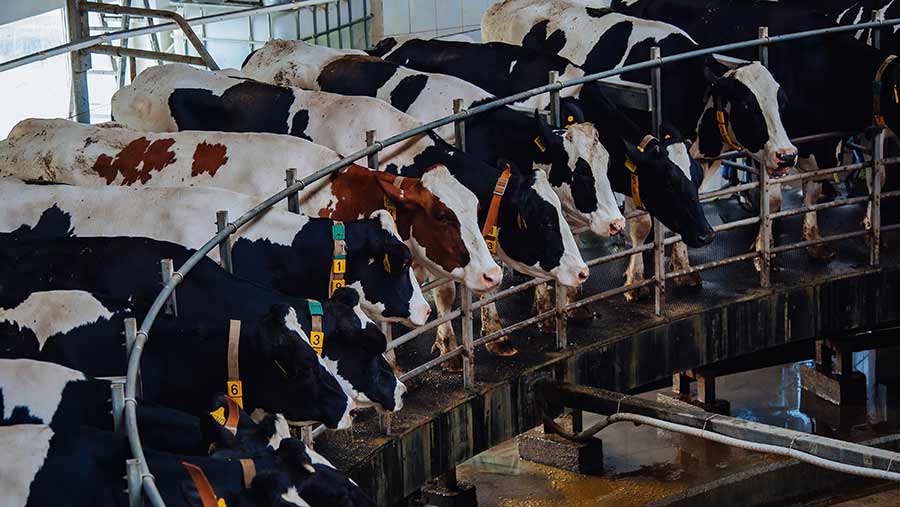Low liquid milk price may push processors to new markets
 © Mulderphoto/Adobe Stock
© Mulderphoto/Adobe Stock UK liquid milk processors could generate higher returns for their suppliers by exporting to high-value markets overseas, according to a report which warns that milk as a supermarket loss-leader is unlikely to remain viable.
Analysis by Kite Consulting has shown that since 2019 UK raw milk prices have lagged behind world prices by an average of £4.29/100kg, particularly in the liquid market which has faced intense price competition and discounting among retailers.
Meanwhile, global dairy demand has outgrown supply and previous analysis by Kite has shown that this unsatisfied demand will increase.
See also: How a dairy farmer has cut his herd replacement rate to 19%
In its Beyond Reset report, Kite points to this combination of factors making UK milk competitive as a raw material for selling on the world market, which it says is at least as attractive as the domestic market.
Managing partner John Allen said the study had shown that UK dairy processors could make a strategic decision to improve returns by supplying growing global markets at a time when domestic markets generated comparatively poor returns.
He said: “This changes the dynamics in the market and creates a ‘new normal’ which, when combined with a liquid milk sector in the UK that has consistently under-delivered on price in recent years compared with other sectors, has the potential to drive structural change across the UK dairy industry.
“With this dynamic in the market, it seems unlikely that liquid milk as a retail loss-leader in the UK will remain viable – if retailers want to secure long-term supply from partners that are committed to fulfilling their decarbonisation objectives, they need to provide a competitive market return.’’
In value terms, liquid milk accounts for a third of total UK dairy sales, but more than 50% on a volume basis, with about 94% of sales by UK processors into the domestic market.
Based on 2020 data in the public domain, Kite has calculated the weighted average earnings before interest and tax (EBIT) for UK liquid-focused processors at £1.02/100kg of milk while the weighted average for all other UK processors is £2.24/100kg.
In comparison, a group of leading global dairy processors generated an average EBIT of £3.35/100kg, processing about 10 times the total UK production.
Changing global market
Traditionally, world prices had been lower and more volatile than UK prices, with higher peaks and deeper troughs, but since the EU quota release in April 2015, the world market has caught up.
Since 2019 UK raw milk prices have lagged behind world raw milk prices, particularly in the liquid market.
The report also notes that New Zealand milk prices, which before 2015 almost never exceeded the UK price, had been higher since 2019.
“What this means is that UK milk is now competitive as a raw material for selling on the world market in a way that it hasn’t consistently been previously,’’ the report states.
It notes that, in its current state, the liquid market does not provide profitable returns for UK dairy processors or the farmers who supply them.
Mr Allen called for a reset, “prioritising fresh liquid milk and valuing it accordingly.”
